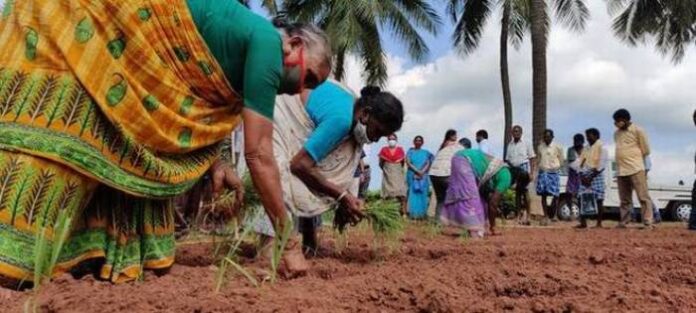Nearly 5,000 farmers, mostly tribals, adopted Karnataka’s Guli method, witnessing the bumper yield of finger millet in Northern Andhra, East Godavari
Vijayawada, September 08, 2021: The famed agronomic practice of the ‘Guli’ method, which thrives in Karnataka’s Haveri region, has reached one of the poorest regions of the country – Northern Andhra Pradesh – attracting thousands of tribal farmers to adopt the ‘Finger Millet’ cultivation.
Realizing the bumper yield in the Guli method, hundreds of tribal farmers have already adopted this method. On the other hand, the Andhra Pradesh Community Manager Natural Farming (APCMNF) has intensified its efforts to encourage more farmers to embrace the method and expedite the field-level research through Agriculture Research Stations.
Acharya N.G.Ranga Agricultural University (ANGRAU) Board Member Pachari Devullu told The Hindu; “The tribal farmers were trained in the Guli method of cultivation in Karnataka. In 2016-17, the method was tested in the Araku agency with 100 farmers from the six gram panchayats. By 2021 Kharif season, nearly 5,000 farmers are practicing this method to cultivate Finger Millet in the Northern Andhra and East Godavari districts”.
The unique feature of the Guli method is ‘maintaining the ideal space between the plants with square planting design. Each plant should have space of at least one feet distance from the other.
“In Guli method, we have recorded a maximum of 60 tillers of a plant. Desi seed varieties – Pedda Chodi and Chinna Chodi – are guaranteeing the bumpear yield. Until now, the success has been scripted by adopting recommendations of the natural farming without using any fertilizers and pesticides”, claimed Mr. Devullu.
At ANGRAU, Visakha agency-based Mr. Devullu is monitoring the Guli method in Andhra Pradesh and is engaged in coordination with the Scientists and tribal farmers according to the reports published in thehindu.com.
Last week, the ANGRAU Agriculture Research Station (ARS-Peddapuram) scientists have sown the finger millet on their research field, commencing the research on the Guli method in finger millet cultivation. Simultaneously, similar research is in progress at the ARS Chintapalli, Seetampeta and Millet Research Institute, Vizianagaram.
“The yield is between 6 to 8 quintals per acre under the Guli method compared to the normal farming methods, in which farmers use fertilizers and pesticides. The APCMNF is taking an initiative to reach out to the farmers across the state, persuading them to shift to the Guli method for the cultivation of millets,” added Mr. Devullu during the field inspection in Chintoor agency last week.





















